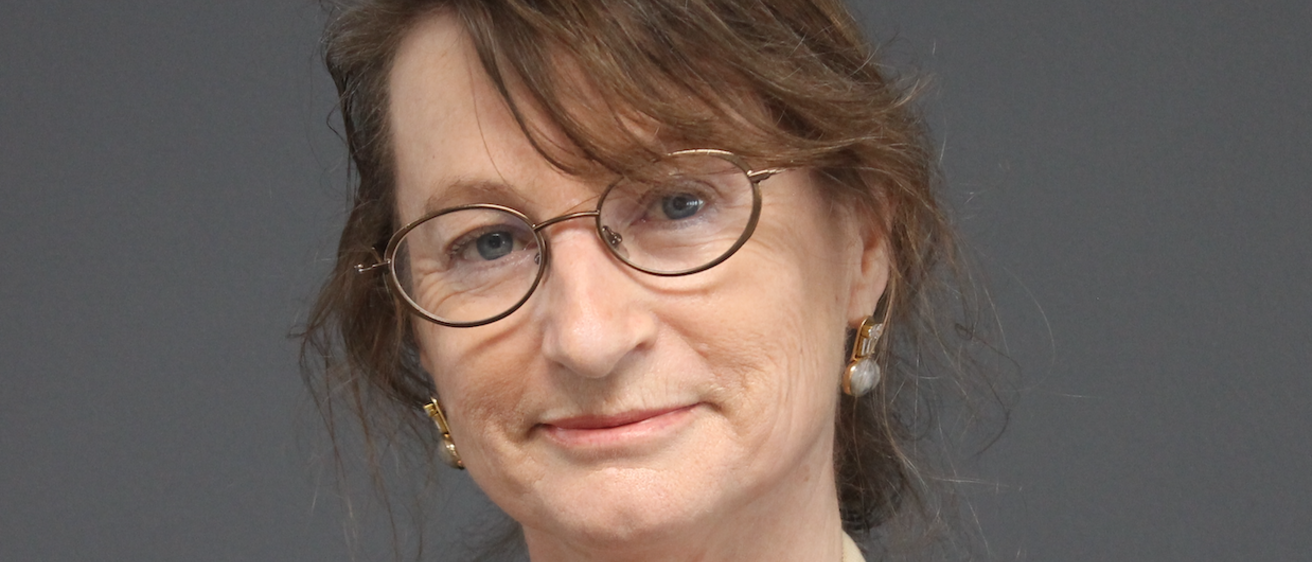Just as it has for decades, Halloween remains synonymous with witches. But what’s the history behind the plastic cauldrons and pointy hats?
University of Iowa German professor Waltraud Maierhofer is an expert on how the history of witchcraft trials in Europe and the United States continues to haunt the modern world. She not only teaches a class on witch trials, but recently translated a noteworthy novel based on documents from a trial in which children were prosecuted.
Q: Where did the idea of witches originate?
A: Historically, it’s not the cute thing we do around Halloween time but something very dangerous. It began as this idea of people who made pacts with the devil, a concept that dates all the way back to Adam and Eve.
In the European Middle Ages, believing in witchcraft and the devil was a sin. That started to change in the late 1400s as the power of the church began to wane. Almost everybody started to believe in witchcraft and was encouraged to suspect others of it and watch out for it. That led to actual witchcraft trials and people being put to death.
Q: What social forces led up to the witchcraft trials that took place from the 1400s up until about 1700?
A: This was a time of change, when new trends confronted old traditions. Life is very uncertain. We have the plague, there are wars going on, and it's the time of the Reformation when the role of the church was criticized. It's also a time when monarchs wanted more power to be free from the rule of the church. So the church actually sees its role in society in danger and starts saying, “There's witchcraft everywhere, there's harmful magic which needs to be eradicated and the true beliefs affirmed.”
It was a counterforce to the new more rational thinking. So, we have the trend toward rationalism and more belief in scientific discoveries on the one hand. On the other hand, the church actually encouraged belief in witchcraft and in the thought that there were individuals trying to harm others, the community, and ultimately God and therefore needed to be put on trial and eventually executed.
Q: Where were these trials conducted, and what affect did they have on our modern legal system?
A: Rural areas, particularly in German-speaking territories, persecuted accused witches more heavily than urban areas, but witchcraft prosecutions were just as severe among Protestants as Catholics.
As for the trials, if you can't have direct evidence of the pact with the devil, then you need witnesses or a confession. Can you torture people to get a confession? This was a question that some demonologists asked, and the answer, in the Early Modern period, was yes. In the earlier centuries, the judges asked for a sign from God, whether someone drowned or not if thrown into water or if someone survived fire for example. Compared to these ordeals, relying on confession was progressive and a step towards reliance on evidence.
Both theologians and legal experts argued against the application of coercion over the next centuries, and reliance on evidence replaced the reliance on a confession. Reliance on evidence is an important part of the legal system today. A coerced confession in the 1782 trial against the Swiss maidservant Anna Goldin, the so-called last witch of Western Europe, caused a scandal and was widely criticized in legal publications. This practice was not supposed to happen after legal reforms and enlightened ideas about human rights.
Q: Were the witch trials a means of social suppression?
A: Yes. The thought was that if there’s harmful magic everywhere, you have to watch for it and you have to mistrust people who are outside the control of others. And those people often happened to be widows, orphans, and the poor, but also women who had taken on a business or occasionally someone who had become rich mysteriously.
The economic model at the time was that there's only limited good. So if someone gets unusually rich or the neighbor’s cow gets more milk than your own, you’d suspect there's witchcraft involved.
Q: What changed and what should we keep in mind for Halloween now?
A: It’s fascinating that there was a turning point where reaching further than your given position in life is something that was condemned because it was seen as harming others. In my favorite image, when my cow gives less milk than the neighbor’s, it must be my neighbor trying to harm me.
I find it intriguing that the witchcraft prosecutions were at a high point when the legend of Faust began. In this legend, a man deals with the devil to get more knowledge, riches, and power and is sort of admired for it, though he finds an early, unfortunate death that served as a warning.
But this is a transition from a belief in a God-centered society to a human-centered belief and free will, individuals making choices. Faust comes along and says, “I want more knowledge, more riches, more adventures.” It’s a transition to a belief that resources are not limited and that it’s good and admirable to reach beyond your given station in life.
Q: What do you want people to take away from this?
A: Even though witches are a very light-hearted and entertaining topic now, we should keep in mind that there was a time when people took that very seriously, and it led to thousands of deaths—the current estimate is about 50,000 in Europe. Witch hunts and lynching still happen today in some places of the world
But it’s also a sign of how far we have come and a reminder that it is everyone’s responsibility to stand up against division, exclusion, and fear in our communities.
